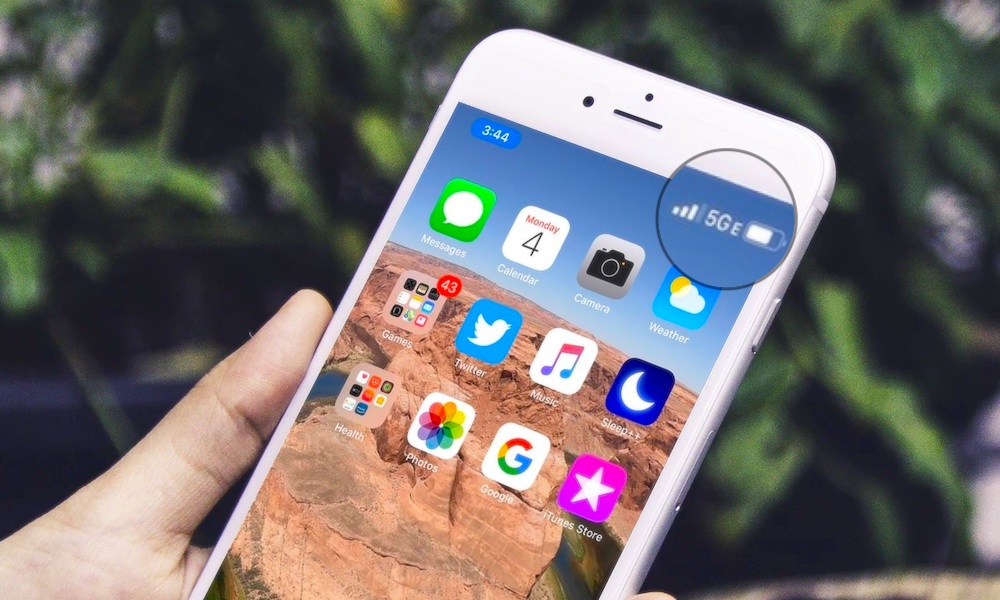AT&T May Grudgingly Remove Its Fake and Misleading 5G Branding
 Credit: Digital Information World
Credit: Digital Information World
Toggle Dark Mode
Early last year, AT&T began pulling what some considered to be a dirty marketing trick, creating what it called its “5G Evolution” service that misled many into believing that their iPhone was actually already on a next-generation 5G network — months before “real” 5G networks were being widely deployed.
It was misleading marketing, plain and simple, since by AT&T’s own admission, it was simply an upgrade to the same 4G LTE technologies that had been around for a long time, and to make matters worse, AT&T’s so-called “5G E” network was actually slower than the LTE networks of its rivals, which were still branding their networks much more truthfully as what they actually were.
It’s a bit disappointing that Apple went along with this marketing stunt on AT&T’s part, since it seemed it was Apple who added the actual “5G E” icon the iPhone status bar in iOS 12.2, however it also seems likely that the company’s contractual arrangements with AT&T may have left it with no choice, and the icon may have even been a part of the Carrier Settings package that would have been delivered by AT&T itself (albeit through Apple’s servers and vetting process).
However, despite attempts by AT&T’s competitors to get it to play fair with its branding, AT&T stubbornly refused to stop promoting its fake 5G service. Sprint even went so far as to bring a lawsuit against AT&T, stating that “the significance of [it’s] deception cannot be overstated,” however the two companies apparently came to some kind of settlement that didn’t actually require AT&T to change its behaviour.
In fact, AT&T’s response to the Sprint lawsuit was that it was simply too bad if competitors didn’t understand, because its customers supposedly “loved” the “5G E” branding, although we have to assume that was based entirely on a false assumption that they were on a significantly better network than they actually were.
Meanwhile, AT&T’s competitors were forced to field complaints from their own customers demanding to know why their networks didn’t yet support 5G when AT&T’s presumably did, so it’s easy to understand how they were annoyed by the game that AT&T was playing.
Misleading Consumers
Although it may not matter much now, considering how widely actual 5G is being deployed across the United States, it looks like AT&T’s rivals may have finally gotten the company to back down, thanks to the intervention of the National Advertising Review Board (NARB).
In an announcement today, a panel of the NARB recommended that AT&T discontinue all of its marketing claims related to “5G Evolution” and “5G Evolution, The First Step to 5G,” in a response to a challenge by T-Mobile before the National Advertising Division (NAD).
The NAD had already recommended that these claims be discontinued, however AT&T appealed the decision to the NARB, which agreed with the NAD’s findings and recommendations that AT&T’s “5G E” branding was deceptive and misleading.
Both claims will mislead reasonable consumers into believing that AT&T is offering a 5G network.
Statement from the National Advertising Review Board
Further, the panel emphasized that the mere use of the term “Evolution” is make customers aware that the service is not actually 5G, since it could imply that AT&T’s technology has “already evolved into 5G” as opposed to simply being on the way there.
After the NAD decision, AT&T had tried to qualify its marketing by adding “The First Step in 5G,” however the panel noted that this “did not cure the concern” that consumers would still be misled into believing that they’re on a nascent 5G technology, when in fact they’re actually still using a 4G LTE network.
AT&T of course wasn’t happy with the result, saying that it “respectfully disagrees with the reasoning and result reached by the Panel majority,” while continuing to insist that customers are in fact benefiting from “dramatically superior speeds and performance” on its so-called “5G E” network. Despite this, however, AT&T grudgingly acknowledged that it will come with the NARB’s decision “as a supporter of the self-regulatory process.”
In a statement to MacRumors, AT&T noted that it’s not currently using the “5G Evolution” branding in any of its advertising anyway, but did not confirm or deny whether it will stop using the “5G E” icon on the iPhone and other smartphones. although it certainly seems that this latest decision may be enough for Apple to insist that AT&T agree to remove the misleading label from the iPhone as well.







